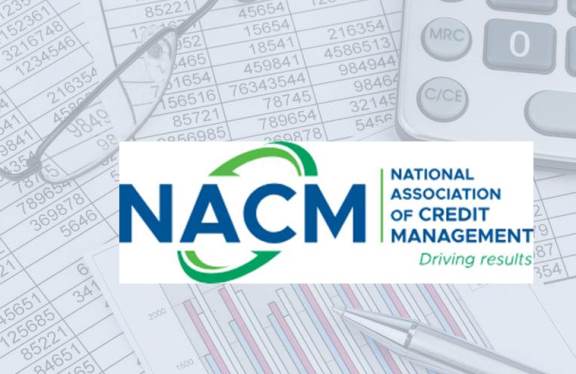After a somewhat rocky beginning there has been a welcome correction as far as economic data is concerned. Now the question is which of these trends will really take hold through the remainder of 2019? There is some evidence to support both optimism and pessimism. As a matter of fact, these contradictory indications have become quite the topic among economists.
The Purchasing Managers’ Index tumbled dramatically at the end of the year but then bounced back in February. There were similar performances seen in everything from capacity utilization to capital expenditures, durable goods orders and other markers of the economy. The worrisome part shows up with higher commodity prices and the impact of a global economic slowdown. This month’s CMI follows some of that same pattern.
The overall reading regained some ground with a score of 54.9 – up from the 53.4 notched the month before. This takes the number back to the levels seen last November when it hit 55.8. The even better performance was noted in the index of favorable factors as it hit 60.7 after falling to 59.5. The only months where this score has been under 60 was December of last year and January of this year – all the rest of the last twelve months have been in the 60s. The index of unfavorable factors also reached a nice milestone as the index escaped the contraction zone with a reading of 51.0. In the last twelve months this index has been in contraction only three times and the February score is the highest seen in the past year.
As is generally the case, the details provide some better insights. As mentioned, the index of favorable factors returned to the 60s with a reading of 60.7. Two of the sub-index categories remain in the high 50s and two are solidly in the 60s again. The “sales” category had fallen to 59.7 and is now at 62.6. This is higher than it has been for the last couple of months but not back to the 64.5 level reached last November. The “new credit applications” sub-index remained in the 50s but improved from 58.2 to 58.9 while the “dollar collections” reading stayed almost the same as last month with a reading of 59.1 compared to the 59.0 in January. The “amount of credit extended” number went from 61.2 in January to 62.3 this month and that is higher than it was in December or January.
There was some significant movement in the sub-index readings for the unfavorable factors as well. The “rejections of credit applications” shifted up again and now stand at 52.1, the highest score notched since August of last year when it hit 52.2. The “accounts placed for collection” also moved up from 48.2 to 49.0 although this remains in contraction territory. The “disputes” category likewise moved up slightly but remains in the contraction zone with a reading of 48.5 as compared to the 47.1 noted in January. The reading for “dollar amount beyond terms” escaped the contraction zone by hitting 51.3 after languishing at 47.4 the month prior. This is a substantial jump and in a critical area as slow pays are often the start of bigger issues down the road. The “dollar amount of customer deductions” also jumped back into the expansion zone by the narrowest of margins as it hit an even 50.0 after tracking at 48.0 in January. The “filings for bankruptcies” numbers improved as well and the reading remained strongly in the md-50s with a 54.9 as compared to 53.8 the month before.
The combination of improved performance in the favorable factors and a real recovery in the unfavorable index casts a different light on the start of 2019. It is not that the concerns voiced at the start of the year are not valid – there is plenty to worry about as far as inflation is concerned and the issues of trade and tariff war will be biting sooner than later. What this does seem to show is continued resilience in many businesses and that would suggest they could survive a bit of downturn this year.
Manufacturing Sector – Manufacturing has been growing rapidly in the US over the last few years and for a variety of reasons. At the top of the list has been the advantage brought by the heavier use of technology and robotics. There have also been some advantages created by cheaper commodities costs and improved options as far as transportation. Global demand has played a major role as well. These are all factors that are in some jeopardy now. The dollar has gained value and that hurts exports, tariffs have added to commodity costs, trade wars inhibit market opportunity and there are chronic issues like labor shortage and productivity decline as fewer trained people are available for hire. These factors seemed to be weighing on the sector the last few months but the latest readings from the CMI indicate there is still strength.
The overall index rose from 53.1 to 54.8 and that is taking the readings back to levels seen last November. The index of favorable factors moved back into the 60s after having dipped into the 50s in December and January. The index of unfavorable factors moved out of the contraction zone with a nice jump to 51.4 – marking the highest reading since May of last year. This data is consistent with the various manufacturing readings that have come from the Purchasing Managers’ Index as well as data on industrial production, durable goods orders and factory orders. As is often the case there are some unusual factors at work that may not extend that far into 2019 and some could even reverse by year’s end.
The “sales” numbers improved and are back in the 60s again with a reading of 61.7 – still a far cry from the 68.2 that was notched in September of last year. The “new credit applications” reading also improved but fell a little short of the 60s at 58.6 as compared to the 53.3 the index noted the month before. The “dollar collections” data jumped back into the 60s with a reading of 60.5 after hitting 58.4 the month before. There was a little dip in the “amount of credit extended” category as it went from 60.3 to 59.2. There seems to be a little more frugality showing up in terms of what kind of credit is asked for and for what kind of purchasing.
 About the Credit Manager’s Index:
About the Credit Manager’s Index:
Since its inception, the CMI has been a startlingly accurate economic predictor, proving its worth most notably during the recession.
The CMI is created from a monthly survey of U.S. credit and collections professionals. The survey asks participants to rate whether factors in their monthly business cycle—such as sales, new credit applications, accounts placed for collections, dollar amount beyond terms—are higher than, lower than, or same as the previous month. The results reflect the entire cycle of commercial business transactions, providing an accurate, predictive benchmarking tool.
CMI reports are released to the media the last business day of each month. View the latest report. If your business extends credit to other commercial businesses and you are located in the 50 US states and US territories, we encourage you to participate in the survey. NACM membership is not required.
Source: Armada Corporate Intelligence


























